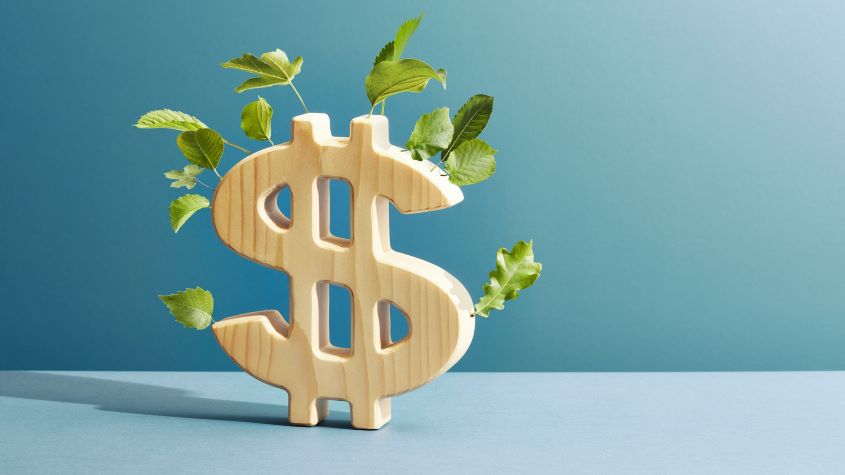The highest yielding S&P 500 Dividend Aristocrats
Dividends are a key component of investment returns in the long-term. A portfolio of dividend aristocrats is a great way to build wealth and a sustainable income stream.


Dividend aristocrats are, as their name suggests, the aristocrats of the investing world.
A company can only achieve dividend aristocrat status if it has paid and increased its dividend for 25 years or more - a tough challenge for most corporations.
Indeed, in 2020, the average lifespan for an S&P 500 business was just 21 years.
MoneyWeek
Subscribe to MoneyWeek today and get your first six magazine issues absolutely FREE

Sign up to Money Morning
Don't miss the latest investment and personal finances news, market analysis, plus money-saving tips with our free twice-daily newsletter
Don't miss the latest investment and personal finances news, market analysis, plus money-saving tips with our free twice-daily newsletter
So, any business that’s achieved dividend aristocrat status has not only outlived most large public US corporations but it’s also been able to reward shareholders with ever-increasing returns along the way.
Why dividend stocks?
Dividend aristocrats are the kings of the dividend stock universe, and any investor should have some exposure to these equities.
There’s a considerable volume of research that shows the power of dividends over the long term. According to Hartford Funds, an investor who put $10,000 in the S&P 500 in 1960 would have been sitting on a portfolio worth $795,823 at the end of 2021, excluding dividends.
However, an investor who’d reinvested all of their income would have a portfolio worth nearly $5 million.
Dividend stocks are even more powerful investments during periods of market and economic uncertainty. In the 1940s, 60s, and 70s, decades in which total annual returns were less than 10%, dividends accounted for between 44% and 73% of an S&P 500 investor’s total returns.
In the 1950s, 80s, and 90s, when total annual returns were well into the double digits, dividends contributed between 30% and 16% to overall performance.
Overall, the average contribution from dividends to total equity returns in the S&P 500 between 1930 and 2021 clocked in at 40%. These numbers speak for themselves. You can’t afford to ignore dividend stocks.
What is a dividend aristocrat?
The data shows that dividends are a crucial component of investment returns in the long run, but not all dividends are created equal.
Companies can (and frequently do) cut their dividends to investors, and this can lead to sudden share price declines, wiping out years of income returns in just a few hours.
As dividends are paid out of company profits, if a business sees a sudden drop off in profits, it might have to cut its distribution to investors. That’s particularly likely if the business is paying out more than it can afford in the first place.
Companies only qualify as dividend aristocrats if they’ve paid and increased their dividends for 25 years or more.
This track record tells investors a lot about the underlying business. It shows profits are predictable, and the company has a level of pricing power as well as competitive advantages.
It also shows the company is well-run, with its managers focused on generating long-term value rather than short-term profits. Dividend aristocrats are also likely to have strong balance sheets with low levels of debt.
As you might expect, there are only a handful of these companies in the S&P 500. There are just 65 stocks that qualify today.
Here are the five highest-yielding dividend aristocrats
The dividend aristocrats with the highest yields
The dividend aristocrat with the highest yield also has one of the longest payout track records.
Topping the list is 3M, with a forward dividend yield of 6%. This company has 64 consecutive years of dividend growth.
Next up is Walgreen Boots Alliance, with a dividend yield of 5.9% and 47 consecutive years of dividend growth.
IBM currently yields 5.3% and has been paying and increasing its dividend for 28 consecutive years.
Realty Income is next on the list, with a 4.9% dividend yield and 28 years consecutive years of dividend growth.
And finally, the dividend aristocrat with the fifth highest dividend yield is Amcor. The company has increased its dividend for 40 consecutive years and currently yields 4.5%.
Should you buy these dividend aristocrats?
All of these companies qualify as dividend aristocrats, but we need to remember that this is a backward-looking metric.
We know these five companies have paid and increased their dividends for at least 25 years. However, we have no idea if they will be able to continue to increase their dividends for the next 25 years.
Of these five businesses, IBM’s dividend appears to have the weakest foundations. Over the past decade, the storied tech company has really struggled to keep up with its peers.
Even though the firm has been around in one way or another for more than 100 years, it has struggled to reinvent itself for the new tech age. Over the past decade, revenues have slumped by around half, and IBM's debt-to-EBITDA ratio has risen to 4.5, up from around 1.3.
The company hasn’t cut its dividend, yet, but as revenues have fallen, the payout has consumed an ever-increasing amount of its income. Dividend cover - the number of times the payout is covered by earnings per share - has fallen from 2 in 2017 to around 1.5.
For the time being, IBM might be able to maintain its dividend based on these figures although there’s no guarantee.
The company with the highest dividend cover on the list is the integrated healthcare, pharmacy, and retail company, Walgreens Boots Alliance.
Unlike IBM, this company has reported steady revenue growth over the past decade to support its dividend and the balance sheet. Based on current forecasts, the dividend payout ratio sits at 2.3 times, meaning the payout is covered more than twice by earnings per share.
Get the latest financial news, insights and expert analysis from our award-winning MoneyWeek team, to help you understand what really matters when it comes to your finances.
Jacob is an entrepreneur, hedge-fund expert and the founder and CEO of ValueWalk.
What started as a hobby in 2011 morphed into a well-known financial media empire focusing in particular on simplifying the opaque world of the hedge fund.
Before devoting all his time to ValueWalk, Jacob worked as an equity analyst specialising in mid- and small-cap stocks. Jacob also worked in business development for hedge funds.
He lives with his wife and five children in New Jersey.
Jacob only invests in broad-based ETFs and mutual funds to avoid any conflict of interest that could arise from buying individual stocks.
-
 Profit from pest control with Rentokil Initial
Profit from pest control with Rentokil InitialRentokil Initial is set for global expansion and offers strong sales growth
-
 Tap income and capital growth in markets worldwide
Tap income and capital growth in markets worldwideOpinion Three investment trusts with potential for capital growth, selected by Adam Norris, co-portfolio manager of the CT Global Managed Portfolio Trust
-
 Fund inflows hit a six-month high in November – where are investors putting their money?
Fund inflows hit a six-month high in November – where are investors putting their money?Investors returned to the financial markets amid the Autumn Budget in November 2025 but caution remains.
-
 The top stocks of 2025 - did you pick a winner?
The top stocks of 2025 - did you pick a winner?As a chaotic year in the stock market draws to a close, we review which stocks were investors’ top picks for 2025
-
 Canada will be a winner in this new era of deglobalisation and populism
Canada will be a winner in this new era of deglobalisation and populismGreg Eckel, portfolio manager at Canadian General Investments, selects three Canadian stocks
-
 Best-performing stocks in the S&P 500
Best-performing stocks in the S&P 500We take a look at the best-performing stocks in the US equity market. Are there opportunities outside of Big Tech?
-
 What is Vix – the fear index?
What is Vix – the fear index?What is Vix? We explain how the fear index could guide your investment decisions.
-
 The case for dividend growth stocks
The case for dividend growth stocksMany investors focus on yield alone when looking for income, that’s a mistake says Rupert Hargreaves. It’s the potential for dividend growth that really matters.
-
 Halifax: House price slump continues as prices slide for the sixth consecutive month
Halifax: House price slump continues as prices slide for the sixth consecutive monthUK house prices fell again in September as buyers returned, but the slowdown was not as fast as anticipated, latest Halifax data shows. Where are house prices falling the most?
-
 Rents hit a record high - but is the opportunity for buy-to-let investors still strong?
Rents hit a record high - but is the opportunity for buy-to-let investors still strong?UK rent prices have hit a record high with the average hitting over £1,200 a month says Rightmove. Are there still opportunities in buy-to-let?
